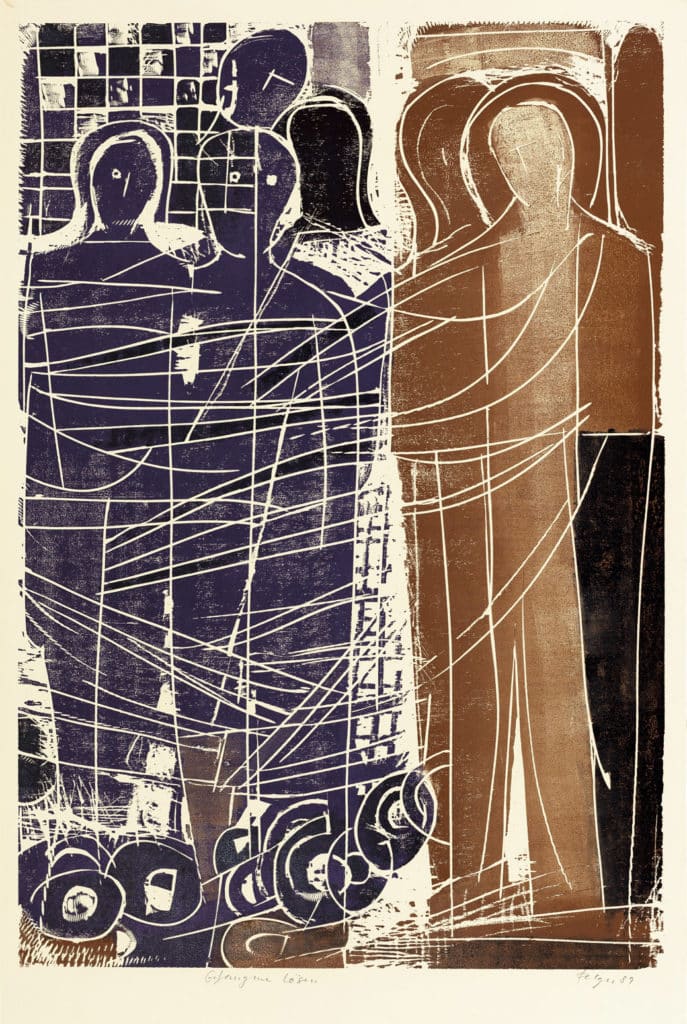Release Prisoners – Works of Mercy I
1989
Wood print on paper
120 x 81 cm
The woodcut cycle by Andreas Felger “Works of Mercy” refers in content to the end-time speeches of Jesus in Matthew 25, 34-46, which have established themselves in the catechetical tradition of the church over the centuries as part of the seven works of mercy.
Andreas Felger created this cycle in 1989 on behalf of the German headquarters of the Diakonie in Frankfurt a.M., where the cycle still hangs in the entrance area.
In the artistic exploration of the Seven Works of Mercy, the doing of mercy as “identification with the needy” was particularly important to Andreas Felger, which he expresses in the technique of the woodcut. The many sweeping cutting lines, which can be seen in each picture of the cycle, sometimes more, sometimes less, not only contour the depicted persons, but also place them in a dynamic relationship, in which identification becomes recognizable. This is particularly visible in the picture “Releasing Prisoners”, in which the bonds of the bound are connected with the active arms of the releasing and it is no longer distinguishable who is actually bound and who is released. Or in the painting “Visiting the Sick”, in which the contouring lines of the bedspread merge with the contours of the visitor’s clothing. All these are indications of identification with the needy.
Andreas Felger has deliberately chosen the technique of woodcut (and not that of watercolor or oil painting) for this subject matter because, on the one hand, with its rough and cracked surface structure, the woodcut already picks up on and underscores the subject matter chosen here on a haptic level, and on the other hand, because the woodcut does not allow any correction. Cuts have to fit. What is gone from the wood is gone, and cannot be corrected or reattached afterwards. The irrevocable artistic deed correlates in this respect also with the subject matter, because a work of mercy on a concrete person in a concrete hour can likewise not be corrected. Either the work takes place at a given and responsible time or it is missed. It is no longer possible to make up for it.
by Kurt Friday

